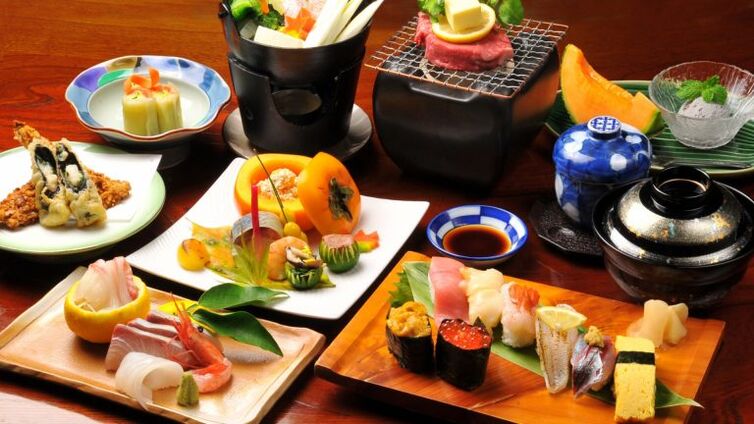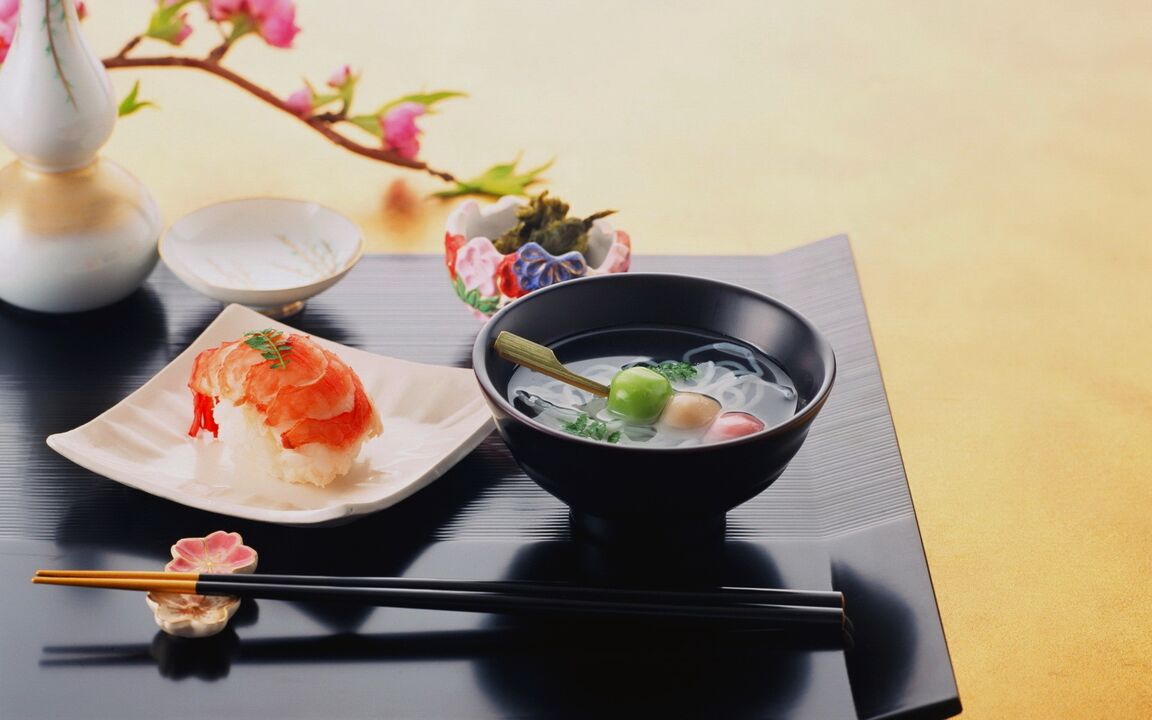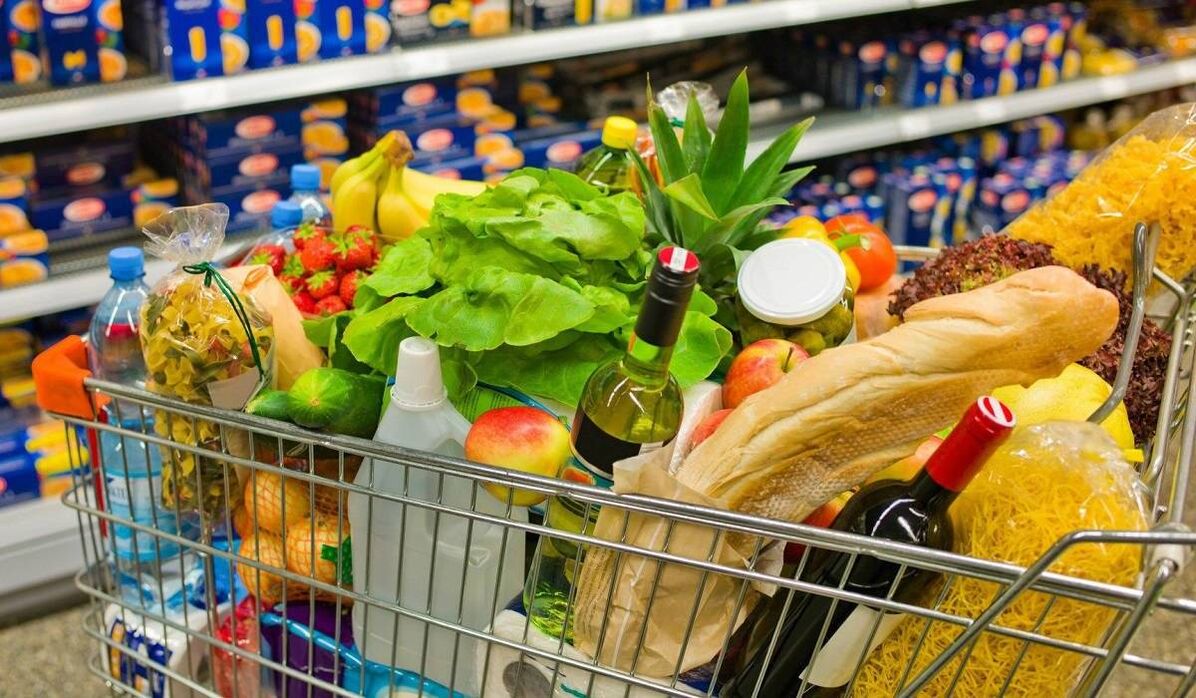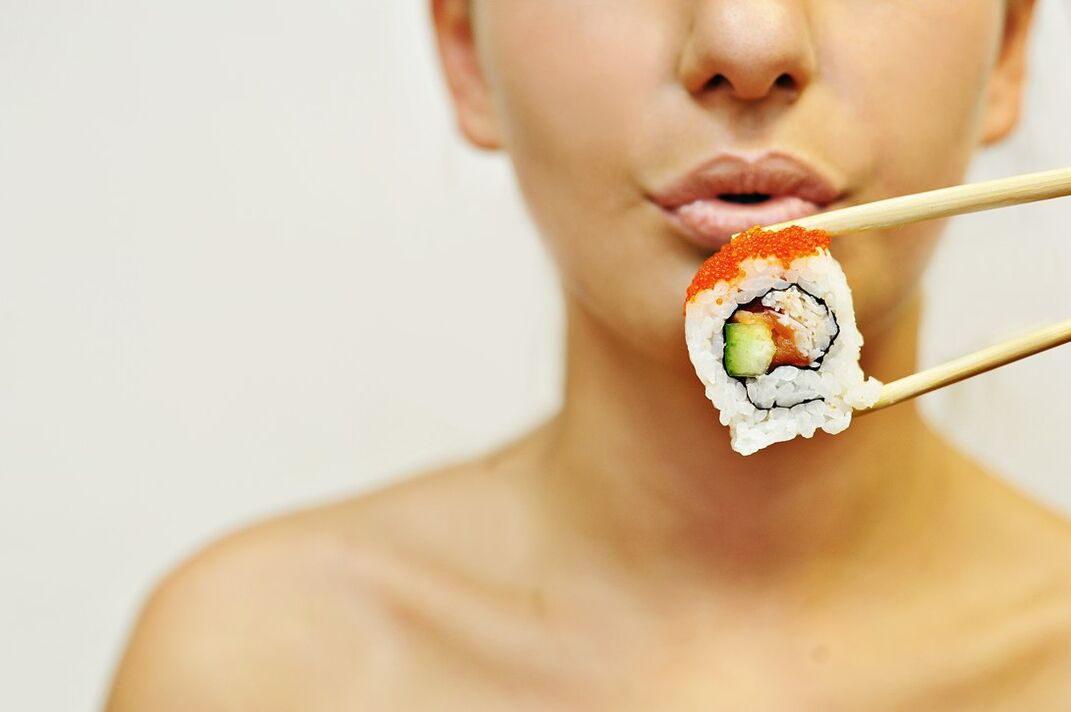In recent years, the Japanese diet has gained immense popularity, which at once combines both quick results and benefits for the body. In addition, the main feature of this 2-week diet plan is that it does not contain the so-called rollback. When everything returns to its original form after 2-3 weeks.
Japanese cuisine is becoming more and more popular due to the increasing popularity of Japanese cuisine in home cafes and restaurants. Today in almost any cooking, you can buy rolls or whatever you need to prepare yourself. SoWhat is the Japanese Diet for Weight Loss?

The main features of the Japanese diet for 14 days
Let's look at what is the Japanese diet for weight loss and on what principles it is based:
- The total duration is 14 days;
- Low carbohydrate, low carbohydrate, high protein foods. Requires discipline and endurance;
- total cost - no more than 2, 000 rubles for the whole cycle;
- The approximate result is from 5 to 8 kg;
- repetition - no more than twice a year;
- stability - high, with the correct exit from the diet after two weeks, the result persists for a long time and without rollbacks;
- Contraindications: during pregnancy, lactation, with diseases of the gastrointestinal tract (ulcers, gastritis, gastroduodenitis, etc. ), with diseases of the kidneys and liver. It is also not recommended in the presence of cardiovascular problems. Starting a dietBefore, it is better to consult
Japanese diet for weight loss - hyped trend or real effectiveness?

The Japanese diet was previously completely unfamiliar. Furthermore, the concept of "diet" refers to and involves drastic reductions in food and calories, up to and including starvation. also believe that the Japanese diet for 14 days will consist of sushi, green tea and of course rice. Nevertheless, you should not judge this diet only by traditional Japanese cuisine, which will remind you of it for two weeks, thatIs sea fish, eggs and green tea - products that are present in many countries of the world. This is a great advantage of the diet, because the diet will consist of familiar foods without foreign ones, which can cause digestive disorders or even allergies. Is.
It is not yet known exactly how the Japanese 14-day diet relates to the Land of the Rising Sun. According to some reports, it was developed in one of the Japanese clinics, according to others, this nutrition plan was developed in Japan. Strict discipline, menu and effectiveness were attributed to due. However, it is not so important that this diet originated as the fact that it is incredibly effective and harmless, when handled and followed properly. Is.
As always, the Japanese menu implies a reduction in calories in the diet. It is based on traditional Japanese cuisine, which is famous for the absence of fatty foods, an abundance of vegetables and fish. Among famous public figures and nutritionistsOne Naomi Moriyama believes that nutrition is the secret of Japanese women who maintain their beauty and slim figure until old age. The key, she says, is low carbs and small servings.
According to Naomi's calculations, Japanese people consume 25% fewer calories than people in any other country. For example, with an abundance of various snacks and even so-called fast food, chips, chocolate bars, fattyConfectionery and even butter are not particularly popular in Japan. Even "street food" is low in calories and low in fat and carbohydrates. Therefore, the menu of the Japanese diet is based on the culture, traditions of the food in the country. and is consistent with the foundation of the diet.
The right diet is essential to burn fat! But think about what kind of result you want to get in the end? Are you sure that you will see a toned and strong body after getting rid of the fat layer? To tone your muscles and gain sexual volume, you need the right workout! And to make it easier for you, we offer a ready-made training plan diagram!
The concept and main rules of the Japanese diet

The share sizes of residents of the CIS and Japan are quite different, so, for many, a sharp transition can be a real test. But don't fret, as the plan is designed for two weeks, after which it slowly-Slow return to normal diet and favorite foods.
Protein will be the basis of your diet and a source of satiety. You can get it only from the following products:
- a fish;
- eggs;
- chicken chest;
- milk products;
- thin flesh.
Only crackers and a variety of vegetables will serve as carbohydrates. As for fat - olive oil. Also, fish and other protein products will contain fat, avoiding a deficiency. Calories, especially one of the carbohydratesThe menu and plan of the Japanese 14-day diet with significant restrictions can be a real challenge. Nevertheless, it is worth noting that the body quickly gets used to such a diet and the second week will not be so difficult.
It is important to note that the healthy fiber is present in sufficient quantity in the menu. It is found in vegetables, which can be consumed almost without any restriction (on few days only). This helps in eliminating any stomach problems. and improves digestion. Green tea and coffee are also included in the diet. They will not only allow you to stay alert and avoid fatigue, but will also provide the body with a large amount of antioxidants. It is important thatTea should be natural, without color and taste, and it is better to buy coffee in beans and brew it yourself.
Looking at the menu of the 14 days of the Japanese diet, you can be sure that all the beneficial substances are present in this nutrition plan, and the main changes mainly affected the size of the portions and the amount of food consumed. Basically, two weeks pass without any results for most people, but if your body reacts too harshly to cutting carbohydrates, you should postpone the diet for the future and see a doctor. Its main symptoms will be headache, severe weakness and fatigue.
The drinking regime is of great importance. You should consume plenty of plain water at room temperature. Firstly, it will help improve digestion and help cope with hunger more easily by simulating a full stomach. Secondly, this will allow you to remove protein processing products from the body. Another important point is the strict adherence to the general plan. If you seriously decide to try it and check how to lose weight on the Japanese diet, thenYou should only consume those foods and in the amounts provided for each day. Substitutions are not allowed. You also cannot change or rearrange the days.
The only exceptions are coffee and tea. In the morning, instead of coffee, you can drink a cup of tea, depending on personal preference. Sugar-free, of course. Salt in the diet is also a negative factor, but if you cut it out completelyIf you can't, then limit yourself to the minimum quantity.
One of the main difficulties, in addition to the low calorie content, is considered to be eating small amounts of food in a day. While other diets include 5 or 8 snacks a day, the Japanese diet only includes 3 meals. It is also worth remembering that you need to start the day with a glass of water, this will "start" the body and metabolic processes. Dinner should be eaten no earlier than 2-3 hours, so as to eat before bedtimeget time to digest.
This is a strict diet, so a smooth entry is recommended, except for dietary changes. So the body will quickly adapt to the new conditions and the diet will be more comfortable. The easiest way to prepare would be to start the diet. Cut out fast food altogether, as well as cut portions (don't eat more than half of the normal serving size) at least 3-5 days before the meal. While this plan may seem too drastic, it's completelyBalanced and does not harm the body, but at the same time it allows you to lose 5-8 kg in just 2 weeks.
Preparation period and grocery shopping

you will need:
- coffee (ground or grain) - 1 pack;
- natural green tea - 1 pack;
- chicken eggs - 20 pieces;
- lean meat (pulp) - 1 kg;
- sea fish (fillet) - 2 kg;
- chicken fillet - 1 kg;
- extra virgin olive oil - 0. 5 l;
- carrots - 2-3 kg;
- White cabbage - 2 pieces of medium size;
- eggplant or zucchini - 1 kg;
- Fruits (any other than grapes and bananas) - 1 kg;
- kefir - 1 l;
- tomato juice - 1 l;
- lemon - 2 pcs.
In terms of principles and food lists, the Japanese diet is often compared and even confused with the "chemical diet" - a nutrition plan developed in the United States. Its creator is Osama Hamdi, whose diet is diabetes andActively used in the treatment of obesity. The Japanese diet also uses the principle of a sharp restriction of carbohydrates and an increase in protein intake, due to which the chemistry of metabolic processes in the body is changed, triggering a chain of reactionsThere is a significant difference between these meal plans, however. The Osama Hamadiya system includes an unlimited number of products, which allows you to rely on building muscle mass and vigorous training. The Japanese plan has a strict quantitative limit and a short duration of only two weeks. This is a plus for those who want to get quick results and not exhaust the body for months while abstaining from the usual diet.
Detailed menu of Japanese diet for every day

It is important to take this plan very seriously, strictly following the recommendations. Any attempt to break the schema or add products may result in a worse result than expected. Menu of every day of the Japanese diet for 14 daysis as follows:
day number 1
- breakfast - pure coffee without milk or sugar;
- lunch - boiled eggs (2 pcs. ), boiled cabbage with olive oil, 1 glass of tomato juice;
- Dinner - 200 grams of fried or boiled fish.
day number 2
- breakfast - coffee and 1 slice of rye bread;
- lunch - boiled cabbage and 200 grams of fried or boiled fish with the addition of olive oil;
- Dinner - 100 grams of boiled beef and 1 glass of kefir.
day number 3
- breakfast - a slice of rye bread (dry in a toaster) or a biscuit without additives. a cup of coffee;
- lunch - fry eggplant or zucchini in olive oil (any serving size);
- Dinner - 200 grams of boiled beef without salt, fresh cabbage with olive oil, 2 boiled eggs.
day number 4
- Breakfast - a fresh small carrot with the juice of one lemon;
- lunch - 200 grams of fried or boiled fish, 1 glass of tomato juice;
- Dinner - 200 grams of fruit (any).
day number 5
- Breakfast – One medium carrot with the juice of a whole lemon;
- lunch - boiled or steamed fish with a glass of tomato juice;
- Dinner - 200 grams of fruit (any).
day number 6
- breakfast - a cup of coffee without sugar;
- lunch - boiled chicken without salt (500 g), salad of fresh carrots and cabbage (seasoned with olive oil);
- Dinner - a fresh carrot and 2 boiled eggs.
day number 7
- breakfast - a cup of green tea;
- lunch - boiled beef without salt (200 g);
- Dinner - your choice: 200 grams of fruit, 200 grams of boiled beef with a glass of kefir, 200 grams of boiled fish or 2 boiled eggs with salad (carrots laced with olive oil.
day number 8
- breakfast - a cup of coffee;
- lunch - 500 grams of boiled chicken without salt, a salad of cabbage and carrots (season with olive oil);
- Dinner - a small carrot with olive oil, 2 boiled eggs.
day number 9
- Breakfast - one carrot with the juice of a whole lemon;
- lunch - 200 grams of fried or boiled fish and a glass of tomato juice;
- Dinner - 200 grams of fruit of your choice.
day number 10
- breakfast - a cup of coffee;
- Lunch - 3 small carrots (fry in vegetable oil), 1 egg and 50 grams of cottage cheese;
- Dinner - 200 grams of any fruit.
day number 11
- breakfast - a cup of coffee and 1 slice of rye bread;
- lunch - fry eggplant or zucchini in olive oil (in any quantity);
- Dinner - 200 grams of boiled beef, fresh cabbage with olive oil, 2 boiled eggs.
day number 12
- breakfast - a cup of coffee and a slice of rye bread;
- lunch - 200 grams of fried or boiled fish, fresh cabbage with olive oil;
- Dinner - 100 grams of boiled beef and 1 glass of kefir.
day number 13
- breakfast - a cup of coffee;
- Lunch - 2 boiled eggs, boiled cabbage with olive oil and 1 glass of tomato juice;
- Dinner - Fry 200 grams of fish in olive oil.
day number 14
- breakfast - a cup of coffee;
- lunch - fried or boiled fish, fresh cabbage with olive oil;
- Dinner - 200 grams of boiled beef, 1 glass of kefir.
There is an opinion that this diet allows you to achieve the most long-lasting and stable results, without returning to normal weight. After losing weight, it is possible to maintain weight for 3 years, but only on conditionThat you strictly follow the diet and do not start replenishing everything with high-calorie foods immediately after the 15th day. In addition, a good solution would be to adapt the Japanese meal plan to your daily diet.













































